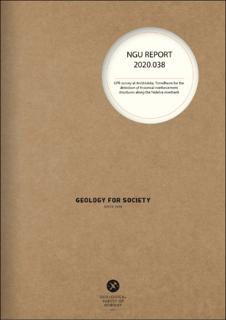| dc.description.abstract | The Norwegian Water Resources and Energy Directorate (NVE) is investigating measures to prevent landslides at Arildsløkka, Trondheim city center. Historical evidence shows that the area was secured by timber boxes in the year 1730 however, it is unknown whether these structures are still intact or if they have been reduced to single rows of pillars which are visible today. According to technical reports, the river flow has deepened the riverbed outside of these pillars up to a depth of 10 meters, creating a risk for the historic reinforcement system. For NVE to be able to assess the possibilities for carrying out modern reinforcement construction operations in the area, information is needed about the status of the old safety system. To indirectly detect the support structure in the vicinity of the timber boxes, NGU has performed two GPR surveys in the area, one in November 2019 and a more detailed second one in May 2020. The goal of these surveys was to resolve the status of these historical reinforcement structures either directly e.g. by detecting wooden pillars or timber boxes or indirectly e.g. by investigating the sedimentary geological layers of the study area. The first survey was conducted as close to the timber boxes as possible with one GPR-line running along the northern Nidelva riverbank and the second at the only open space available south of Ila church, on a small green area in steep terrain. Data processing has revealed two distinct dielectric regimes west and east of the Nidareid bridge, where the overall penetration in the former is larger than the latter. Plotting the results against a historical map from 1772, we were able to identify a clear coherence between higher penetration and brackets of anchoring on the riverbank but also areas of reduced penetration depths that could indicate weakening in the reinforcement structures. We were also able to follow a gravel\/sand trough that possibly frames the old Skansen fortress that used to exist in the area and a high density of buried objects that if correlated linearly, they could indicate buried timber but also modern pipes. Overall, we were able to detect possible horizontal pillars of the historical anchoring system in the study area and to infer possible geological changes that could be linked to manmade structures by using GPR penetration depth as an evaluation criterion. | |

